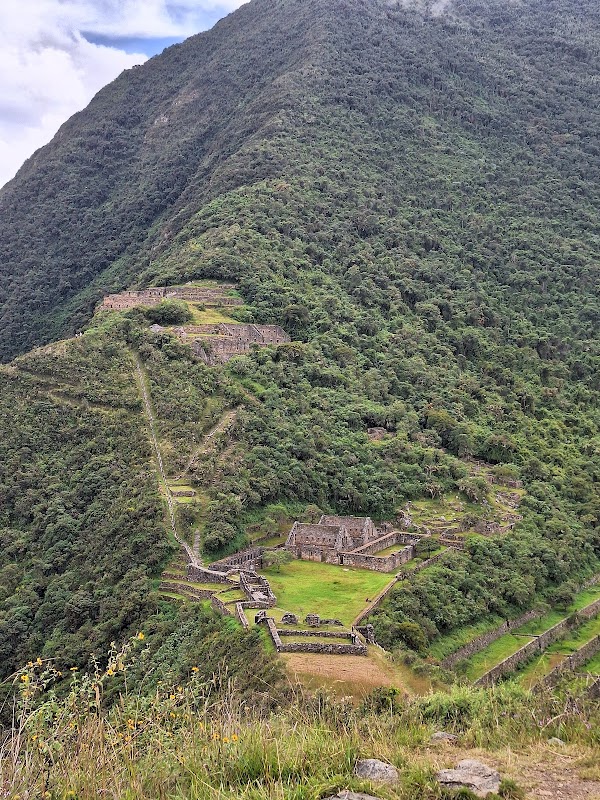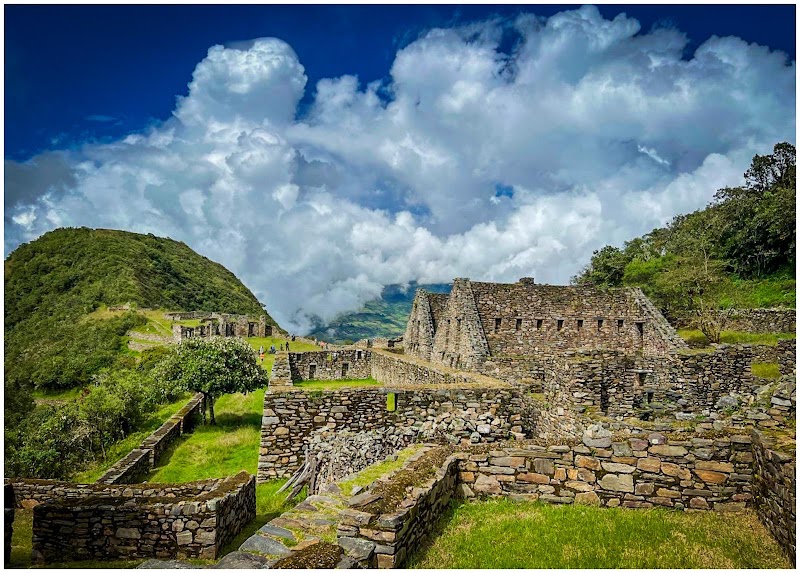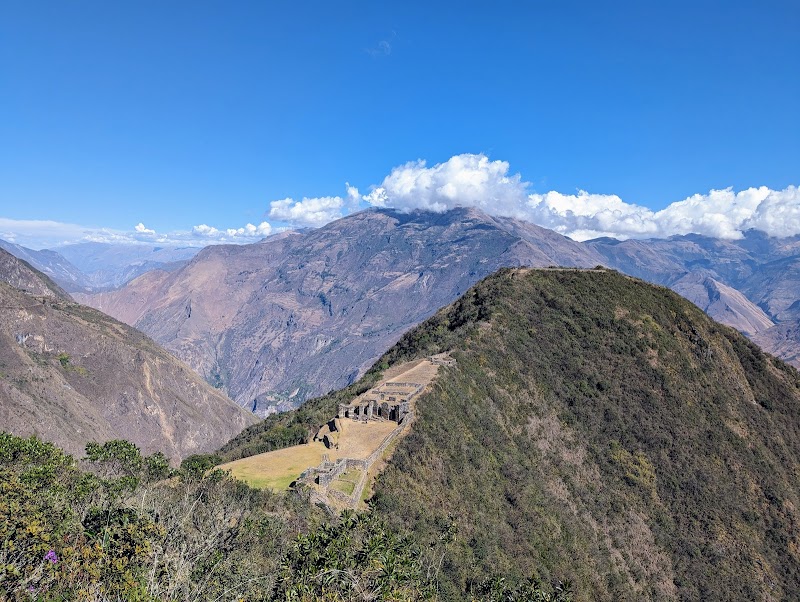
Choquequirao Archaeological Park – Mountain Ruins in Peru
Choquequirao Archaeological Park – Mountain Ruins in Peru
Category
Hiking
Typical Duration
2-4 hours
Difficulty
Hard
Photo Gallery

Choquequirao Archaeological Park – Mountain Ruins in Peru - Choquequirao Archaeological Park

Choquequirao Archaeological Park – Mountain Ruins in Peru - Choquequirao Archaeological Park

Choquequirao Archaeological Park – Mountain Ruins in Peru - Choquequirao Archaeological Park
About This Landmark
Choquequirao Archaeological Park, located in the remote Cusco region of Peru, offers travelers a rare glimpse of Incan heritage against a backdrop of rugged Andean mountains. This archaeological site is often compared to Machu Picchu but remains far less crowded, providing a more intimate experience amid the majestic scenery. The park features extensive stone terraces, ceremonial plazas, and temples that blend seamlessly with the steep, forested slopes of the Apurímac River canyon. The terraces are perched dramatically, carved directly into the mountainside with breathtaking views over deep valleys and winding rivers. The surrounding cloud forests are home to diverse flora including orchids and bromeliads, and the area supports wildlife like spectacled bears and Andean condors, making the setting uniquely vibrant and alive.
The preservation of Choquequirao's ruins is remarkable, showcasing advanced Incan stonework with trapezoidal windows and carefully fitted blocks. The site is believed to have served as a political and military outpost during the late 15th and early 16th centuries. Although archeological excavation continues, Choquequirao is accessible to travelers who appreciate a challenging hike combined with historical discovery. Its remote location, requiring a multi-day trek, makes each visit a rewarding adventure for those seeking a blend of cultural heritage and the raw beauty of the Peruvian Andes. Visitors will find fewer amenities compared to more popular tourist sites, enhancing the feeling of adventure and solitude in this impressive mountain park.
Adventure Guide To Choquequirao Archaeological Park
1. Trekking to Choquequirao Base Camp
- What makes it special: The multi-day hike to Choquequirao passes through cloud forests, river valleys, and alpine scenery, offering progressively dramatic views. The trail challenges hikers with steep ascents and descents while rewarding them with diverse ecosystems and the chance to spot native wildlife.
- Key features: Well-marked trails, campsites at key points, and rustic lodges near the park entrance.
- Local Insight: Hiring a local guide supports nearby communities and enriches understanding of Incan history and Quechua culture.
- Visitor Tips: Best visited during the dry season (May to September) to avoid slippery trails. Bring sturdy hiking boots, insect repellent, sun protection, and layered clothing.
2. Exploring the Archaeological Ruins
- What makes it special: The expansive ruins with impressive stone terraces and ceremonial sectors invite careful examination. It's one of Peru’s few large Incan sites off the beaten path, offering a deep sense of discovery.
- Key features: Walking paths through ruins, viewpoints over the Apurímac River canyon, and informative signage.
- Local Insight: Avoid rushing the visit—spend time photographing and appreciating architectural details.
3. Wildlife Watching and Photography
- What makes it special: The region’s varied habitats are home to rare species like the Andean spectacled bear and colorful birds such as the torrent duck.
- Key features: Early mornings and late afternoons are ideal for sightings. The park’s relative remoteness means fewer disturbances to wildlife.
- Visitor Tips: Bring binoculars and a camera with a zoom lens. Respect wildlife and avoid sudden movements.
Visitor Access
- Getting There: The closest town is Cachora, about 5-6 hours from Cusco by car. From Cachora, the trek to the park entrance is approximately 4-5 hours on foot.
- Best Time to Visit: Dry months between May and September ensure safer trail conditions and clearer views.
- What to Bring: Hiking gear, water purification, snacks, camping equipment if staying overnight, rain gear, and a first aid kit.
Ratings
Overall
Photography
Featured Activities
Primary Activity
Hiking
Also Great For
Essential Information
Nearby City
Cachora, Peru
Protected Areas
Experience Level
Experience Needed: This natural landmark is recommended for those with significant outdoor experience. Best for experienced adventurers.
